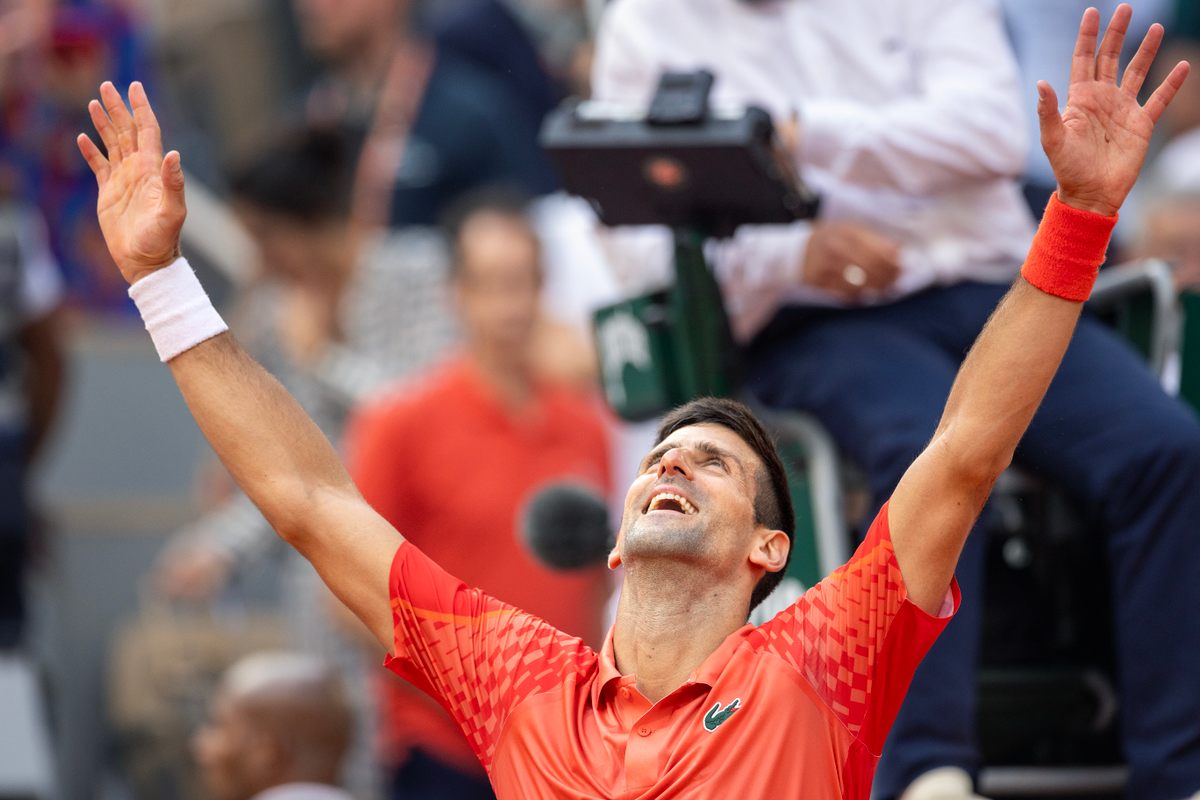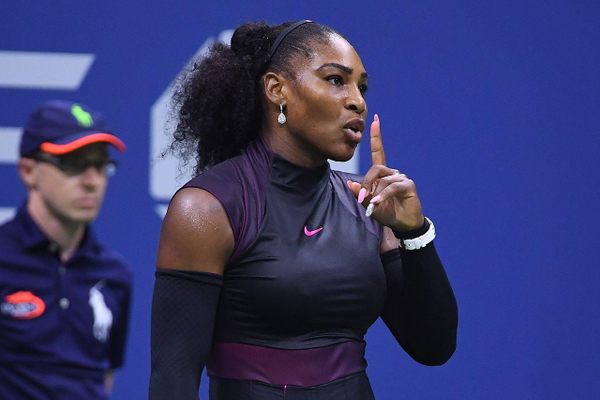Novak Djokovic and the Power of a Bosnian Pyramid
The “miraculous energy” at this controversial site in Visoko has attracted many believers, including the tennis great.
Excerpted with permission from The Theory of Everything Else: A Voyage into the World of the Weird, by Daniel Schreiber, published June 2023 by William Morrow. All rights reserved.
You probably haven’t ever heard of the small city of Visoko in Bosnia. I certainly hadn’t until I started writing this book. For a long time it was a place that rarely popped up in international news. And even when it did, it usually only concerned one local resident, Adnan Nević, who became notable for being recognized by the United Nations as Earth’s official sixth-billionth human. Otherwise, it never really made much of a dent in global news coverage. Fortunes changed for the city in 2020, however, when Novak Djokovic, at the time the world’s top-ranked tennis player, started making pilgrimages there so he could charge up on the cosmic energy being emitted by the local ancient pyramids built by an advanced lost civilization. “There is truly a miraculous energy here,” Djokovic told reporters. “If there is a paradise on Earth, then it’s here.”
The pyramids were first recognized as ancient artifacts by Bosnian-American businessman Semir Osmanagić when he dropped in on Visoko in 2005. He couldn’t help noticing the peculiarly shaped hill standing over the city—it looked suspiciously “pyramid-y” to him and he wondered whether it might be artificial. When he checked the hill’s orientation against a compass, he concluded that the hill was perfectly aligned to the cardinal points, each flank facing north, south, east, and west. Surely that couldn’t be a coincidence, he thought.
A year later he published his book Bosnian Valley of the Pyramids, in which he put forward his belief that these grass-covered hills were in fact the oldest man-made structures on Earth, dating them to 12,000 years ago. This wasn’t his first book to make bold claims. As well as being a successful businessman manufacturing steel parts in Houston, Osmanagić had a side career as a modern-day pseudoarchaeological author. In his 2005 book The World of the Maya he claimed that Mayan hieroglyphics indicate that their ancestors weren’t from the planet Earth, but came from the Pleiades, a cluster of stars 444 light years away. The Pleiadians are a speculated species of alien that conspiracy theorists believe periodically visit our planet. They’re said to be humanoid in looks, with a lifespan of a thousand years. According to Osmanagić, when they arrived here they created an advanced civilization in Atlantis.

I should mention that, despite the hills now being called the “Bosnian Pyramids,” and being located in the “Valley of the Pyramids,” archaeologists and geologists from all over the world would very much like you to know that they’re absolutely not that. The unusual geology of these hills is a very natural phenomenon known as “flatirons,” which is when land forms in a triangular-sloping shape due to erosion-resistant layers of rock lying on top of softer strata. Similar hills are found all over the world.
Fortunately for Osmanagić, many high-ranking officials have ignored the science, including two Bosnian presidents, one of whom, Sulejman Tihić, said of it: “One does not need to be a big expert to see that those are the remains of three pyramids.” The city’s council itself even got on board by investing 250,000 Euros into tourism off the back of the interest in the “pyramids.”
Since coming up with his initial hypothesis, Osmanagić, often referred to by locals as the “Pharaoh,” has led numerous archaeological digs on the site, discovering along the way: a total of five pyramids; evidence of artificial walls built by an ancient civilization; a cosmic Wi-Fi system that can send messages across the galaxy in an instant; and miles of underground passages previously thought to have been built for mining. Nearly 20 years on, however, he’s yet to find any evidence that satisfies the more conventional archaeologists who question his claims regarding the hill’s origins.
Academic dismissal doesn’t appear to bother Osmanagić, nor does it seem to worry the thousands of visitors who have been flocking to his great “find” since 2005. The phenomenon of the Bosnian “pyramids” has boosted the tourism of the city to such an extent that it’s now building multistory hotel complexes to accommodate the thousands of people who flock there. (Around 300,000 tourists were said to have visited the pyramids by 2007.) Local businesses jumped on board too, with restaurants serving food on pyramid-shaped plates and street vendors selling everything from pyramid-themed T-shirts to pyramidal piggy banks for a while.
Then, in 2020, the pyramids received their biggest boost yet when one of the greatest tennis players of all time, Novak Djokovic, started visiting the town and meditating inside the tunnel complex near the pyramids.
Positive energy is very important to Djokovic, and something he directs to many areas of his life. Indeed, in his rollercoaster of a book Serve to Win: The 14-Day Gluten-free Plan for Physical and Mental Excellence, he shares these many beliefs with the reader, including the fact that he believes that conversation is very influential on the food we eat. According to Djokovic, any negative conversation around broccoli, for example, might result in it being stripped of its nutrients as well as its taste. As a result, Djokovic won’t allow any negative energy to get near his dinner table—this means a ban on texting and emailing, and watching television. In his book Djokovic explains: “I believe that if you are eating with some kind of fear or worry or anger, the taste of the food and the energy you get from it won’t be as powerful … What you give is what you get.” And although positive chat is allowed, there isn’t much of that either, as Djokovic basically spends much of the meal involved in mental dialogue with his food. After each bite, he places the fork back down on the table and becomes entirely focused on the chewing. He wants to instruct the food where it needs to go so it can help in the healing of any wounds he may have acquired during recent tennis matches. “As I chew, the process of digestion is already starting. The enzymes in my saliva mix with the food, so that when it hits my stomach it’s a fully formed piece of ‘information.’”
Djokovic’s belief that food and drink respond to our conversations comes from when he witnessed some food and drinks transformed from being in a “toxic” state to becoming edible and drinkable again, simply by someone beaming happy thoughts at them. In an online chat with the wellness guru Chervin Jafarieh, Djokovic explained that “scientists have proven that molecules in the water react to our emotions, to what is being said.”
Though he doesn’t specify exactly which experiment demonstrated this, what Djokovic might possibly be referring to is a researcher, who isn’t named, showing how water would react if you subjected each glass to positive and negative emotions. In the experiment, each glass contained water from the same source. The researcher projected nothing but anger, fear, and hostility to the first glass, while to the other he projected only love and happiness. After a few days, the glass experiencing all of the negative energy turned slightly green, with Djokovic describing it as looking as if algae had started growing in it. The other glass, which received all the positive comments, remained crystal clear.
“Sounds crazy, right? I know,” wrote Djokovic in Serve to Win. “But to me, that test is proof that every single thing in the world shares the same kind of energy—people, animals, the elements, everything.”

Djokovic’s interest in experimenting with alternative ways of consuming his food properly began when he was contacted by a doctor named Igor Četojević, after Djokovic’s game collapsed at the 2010 Australian Open. When Četojević heard that asthma was being given as the reason for the collapse, he decided to get in contact with the tennis star, as he believed it was something more.
Četojević was convinced the tennis player had an undiagnosed gluten intolerance, and decided to diagnose him using a method employed by natural healers called “kinesiological arm testing,” which requires patients to hold their arm straight out in front of them while a second person attempts to push it down. The exercise is then repeated, only this time the kinesiologist introduces another element to see how it affects the resistance of the outstretched arm. In Djokovic’s case, a slice of bread was held against the tennis champ’s stomach. When Četojević depressed Djokovic’s arm, Djokovic was noticeably weaker than when there was no bread present. Djokovic accepted this as definitive proof of serious gluten intolerance.
One of the odd consequences of the pandemic is that it has forced some people’s previously private beliefs into the open. In the case of Djokovic, the world watched as he had a stand-off with the Australian authorities over whether or not he’d be allowed to compete in the Australian Open owing to the fact that he was unvaccinated.
Many have put his unorthodox interests and behavior down to his extraordinarily traumatic childhood in war-torn Serbia. It’s been suggested his alternative views are precisely what he needs in order to help him escape the trauma of his early years. “Two and a half months, every single day and night, bombs coming into the city. We saw planes flying over our heads, and literally rockets and bombs landing half a mile away,” he told CNN.
These were the conditions under which the future champion trained. As the bombs came raining down, Djokovic would be outside, training for up to five hours every day. His coach, former tennis pro Jelena Genčić, who had previously coached tennis champion Monica Seles, took on Djokovic at age six, and would select each day’s location for tennis practice by getting him to travel to wherever the most recent bombing raid had occurred, assuming it to now be safe, as NATO planes probably wouldn’t hit the same place again so soon. When he wasn’t in bombed-out swimming pools, he’d be up in the Serbian mountains, hitting balls while surrounded by wolves. “I spent a lot of time with wolves,” writes Djokovic. “This is wolf energy. I’m not kidding.”
Once you start looking at Djokovic in this context, you start to notice there is no end to his interesting views. There’s his choice of coaching staff: For a while his team included the “guru” Pepe Imaz, a former tennis player turned coach, who runs a tennis school with a philosophy of preaching “love and peace,” as well as introducing meditation and “very long hugs” into the routines of players. There’s also Djokovic’s belief in telepathy and telekinesis, which sits alongside the aforementioned interest in kinesiology, Bosnian pyramids, and not talking rudely around his food.
Djokovic is flatout batshit, but he’s possibly going to end his tennis career as the greatest player to ever play the game. And he isn’t unique in holding odd beliefs. The history of tennis is littered with players who have made it to the top despite their wild ideas. Like the 1950 US Open champion Tappy Larsen, who used to get mid-match coaching tips from an invisible eagle sitting on his shoulder; or Serena Williams, who will only wear one pair of socks throughout an entire tennis tournament; or Rafael Nadal, who won’t stand on any of the lines on the court between points. Odd beliefs have been practiced in the background of sports for centuries. They’re just usually hidden away from us. Though sometimes, very occasionally, we’re given a glimpse of them.















Follow us on Twitter to get the latest on the world's hidden wonders.
Like us on Facebook to get the latest on the world's hidden wonders.
Follow us on Twitter Like us on Facebook